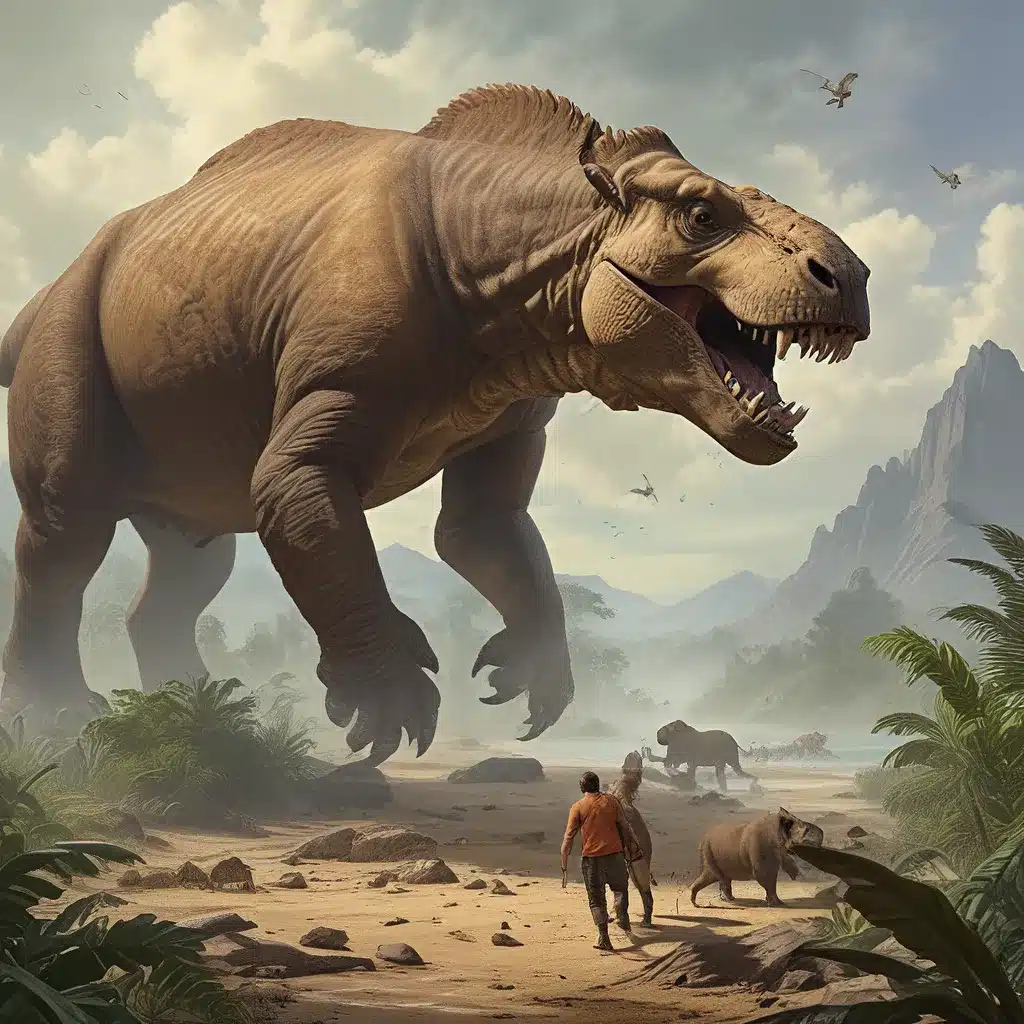
Unveiling the Mysteries of Prehistoric Behemoths
Throughout the Cretaceous period, the Earth was home to some of the most colossal creatures to have ever graced our planet. These Titans of the Cretaceous were truly awe-inspiring, with their massive frames and unparalleled physical capabilities. From the lumbering sauropods to the fearsome tyrannosaurids, the Cretaceous was a time of remarkable megafaunal diversity.
One of the most intriguing aspects of these prehistoric behemoths is the question of why they grew to such immense sizes, far exceeding the largest modern mammals. The Reddit discussion on this topic raises several fascinating points. The dominance of mammals in the modern era, and the subsequent rise of humans as the apex predator, may have played a significant role in limiting the potential for such megafaunal growth in the present day.
Sauropod Giants: Reaching New Heights
At the forefront of Cretaceous megafauna were the sauropods, a group of long-necked, four-legged herbivores that included some of the largest land animals to have ever existed. The sheer scale of these creatures is almost incomprehensible, with the Patagotitan mayorum being one of the most colossal dinosaurs discovered, reaching lengths of up to 37 meters (122 feet) and weighing an estimated 70 metric tons.
These sauropod giants were not only impressive in size but also in their evolutionary adaptations. Their elongated necks and small heads allowed them to reach the highest foliage, while their massive bodies and sturdy legs provided the support necessary to bear their immense weight. Interestingly, the sauropods’ size may have also served as a defense mechanism, deterring potential predators and ensuring their survival.
Tyrannosaurids: Apex Predators of the Cretaceous
Alongside the towering sauropods, the Cretaceous period also witnessed the rise of the fearsome tyrannosaurids, a group of carnivorous dinosaurs that included the iconic Tyrannosaurus rex. These predators were not only formidable in size, but they also possessed impressive hunting abilities, with their powerful jaws and serrated teeth capable of crushing even the thickest of bones.
The Tyrannosaurus rex, in particular, has captured the imagination of people worldwide, thanks to its larger-than-life presence and the numerous archaeological discoveries that have shed light on its life and behavior. Recent studies have revealed that these apex predators were likely skilled hunters, capable of tracking and taking down even the largest of sauropods.
Uncovering the Secrets of Cretaceous Megafauna
As our understanding of the Cretaceous period continues to evolve, researchers have made remarkable strides in piecing together the stories of these prehistoric titans. Through the BBC’s “Walking with Dinosaurs” series and other groundbreaking paleontological research, we have gained valuable insights into the lives and behaviors of these colossal creatures.
One of the key areas of focus for modern paleontologists is the study of Cretaceous paleoecology, or the relationships between the various species that coexisted during this time. By analyzing the fossil record, scientists have been able to reconstruct the intricate food webs and ecosystem dynamics that shaped the Cretaceous landscape.
Exploring the Post-Cretaceous World
While the Cretaceous period was undoubtedly dominated by the reign of the dinosaurs, the subsequent Cenozoic era saw the rise of a new class of megafauna: the mammals. From the massive Megatherium ground sloths to the towering Paraceratherium – the largest land mammal to have ever lived – the Cenozoic was a time of remarkable diversity and evolution.
The transition from the Cretaceous to the Cenozoic was marked by the Cretaceous–Paleogene extinction event, a catastrophic event that wiped out the non-avian dinosaurs and paved the way for the ascent of mammals. This shift in dominance has led many to speculate on the factors that allowed mammals to thrive in the post-Cretaceous world, while the dinosaurs, once the undisputed rulers of the Earth, were consigned to the annals of history.
Ongoing Discoveries and the Future of Megafauna Research
As we continue to explore the rich fossil record of the Cretaceous and beyond, new discoveries are constantly being made that challenge our understanding of prehistoric life. From the unearthing of previously unknown species to the reexamination of existing fossils, the field of paleontology is a constantly evolving landscape.
The Lost Kingdoms website, for example, serves as a hub for the latest news and insights in the world of ancient civilizations and archaeological discoveries. By staying informed and engaged with the ongoing research in this field, we can gain a deeper appreciation for the remarkable Titans of the Cretaceous and the enduring mysteries they hold.
As we look to the future, the potential for further breakthroughs in megafaunal research remains immense. With the continued development of advanced imaging techniques, genomic analysis, and sophisticated modeling tools, paleontologists are poised to uncover even more secrets about the lives and environments of these prehistoric behemoths. The Cretaceous may have been the age of the dinosaurs, but the legacy of these Titans continues to captivate and inspire us to this day.


